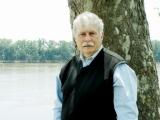Gavel Gamut By Jim Redwine
www.jamesmredwine.com
FEET OF CLAY?
William Shakespeare had Marc Antony preach these words at Julius Caesar’s funeral:
“The evil that men do lives after them; the good is oft interred with their bones.â€
Act III, Scene 2
Antony went on to list Caesar’s accomplishments in addition to his being ambitious. There was some good, some bad. Perhaps the citizens of Rome should have erected a partial statue of Caesar honoring just the good parts.
This could be a solution to our current controversy over monuments to historic figures. A committee could be composed of people who admire the works of a now dead leader and those who find the figure’s behavior flawed. A few examples might be helpful.
George Washington survived Valley Forge, presided over the Constitutional Convention and refused the opportunity to be named an emperor. On the other hand he owned hundreds of slaves and helped enshrine slavery into our legal system. The Committee might consider cutting the Washington Monument in half.
Thomas Jefferson was responsible for the Bill of Rights that guaranteed individual liberty but only to twenty-one year old white males. He also owned slaves and had children by one of them. Today such an employer/subject relationship would result in severe censure. Perhaps the Committee might recommend the Jefferson Memorial be closed every other week.
As we search for unblemished heroes to honor we could consider Abraham Lincoln who issued the Emancipation Proclamation. However, he at first averred slavery would be preferable to the disintegration of the Union and the Proclamation did not free all slaves just those in the states of the Confederacy. The Committee could maybe have a disclaimer added as a placard around his statue’s neck.
Andrew Jackson committed adultery, captured Seminole Indians under a flag of truce and as president created The Trail of Tears. On the other hand, he was a courageous and victorious military leader. A short bronze bust could replace his heroic sized statue.
As for Mount Rushmore the Committee would have to remove at least 3 of the 4 figures. Of course, Teddy Roosevelt had a penchant for shooting animals which might upset the ASPCA; so all 4 might have to be erased.
Right here in Posey County, Indiana we have a dilemma about what to do with our most famous citizen. Alvin Peterson Hovey was once Posey Circuit Court Judge, a Civil War general for the Union and our only governor. Unfortunately, he also was instrumental in helping to cover up the murders of seven Black men in October 1878. One of those Black men was shot and stuffed into a hollow tree on a farm owned by Hovey. Will the Committee have to remove the glowing patina from Hovey’s bronze in the Indiana State House?
One might look to Jesus as the paragon of virtue but even he got angry and threw the moneychangers out of the temple. He, also, voiced his hope that the cup of his great travail might pass from him. On the other hand, apparently no one knows what Jesus looked like unless one believes the Shroud of Turin is a clue. I guess the Committee would not be able to find any statues of Jesus to modify.
It appears that history has not provided us with any perfect examples to honor. Maybe the Committee will have to suggest that all statues be modified by substituting feet of clay.
EDITORS FOOTNOTE: For more Gavel Gamut articles go to:






The Democrat elected politician couldn’t help himself, could he? Including Christ’s righteous anger alongside the owners of slaves, adulterers, and political power abusers is only natural, right? The judge usually is on point, but he occasionally has to remind us he is a politician first, which makes him a judge secondly.
Wow, so what is the Jugdes solution to his questions??
Comments are closed.